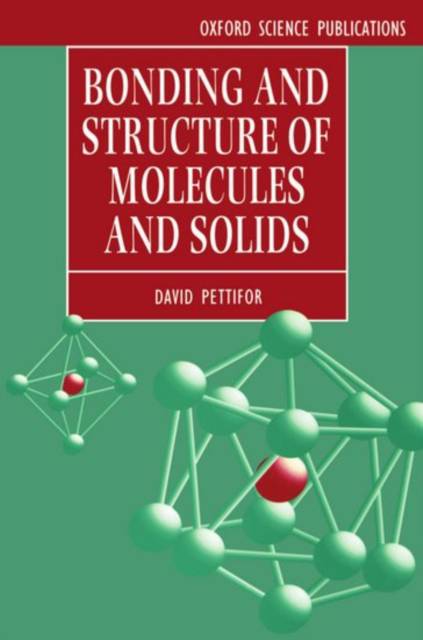
Door een staking bij bpost kan je online bestelling op dit moment iets langer onderweg zijn dan voorzien. Dringend iets nodig? Onze winkels ontvangen jou met open armen!
- Afhalen na 1 uur in een winkel met voorraad
- Gratis thuislevering in België vanaf € 30
- Ruim aanbod met 7 miljoen producten
Door een staking bij bpost kan je online bestelling op dit moment iets langer onderweg zijn dan voorzien. Dringend iets nodig? Onze winkels ontvangen jou met open armen!
- Afhalen na 1 uur in een winkel met voorraad
- Gratis thuislevering in België vanaf € 30
- Ruim aanbod met 7 miljoen producten
Zoeken
Omschrijving
This book explains the observed trends in the bonding and structure of molecules and solids within the models of the electronic structure. Emphasis is placed throughout on recent theoretical developments that link structural stability to the local topology or connectivity of the lattice through the moments of the electronic density of states. The chemically-intuitive Tight Binding approximation provides a unified treatment of the covalent bond in small molecules and extended solids, while the physically-intuitive Nearly-Free Electron approximation provides a natural description of the metallic bonds in sp-valent metals. Unlike the conventional reciprocal-space formulation of band theory, this modern real-space approach allows an immediate understanding of the origin of structural trends within the periodic table for the elements and the AB structure map for binary compounds. Although this unique book is aimed primarily at postgraduates in physics, chemistry, and materials science, a chapter on basic quantum mechanical concepts is included for those readers with little or no basic knowledge of the subject.
Specificaties
Betrokkenen
- Auteur(s):
- Uitgeverij:
Inhoud
- Aantal bladzijden:
- 270
- Taal:
- Engels
- Reeks:
Eigenschappen
- Productcode (EAN):
- 9780198517863
- Verschijningsdatum:
- 7/12/1995
- Uitvoering:
- Paperback
- Formaat:
- Trade paperback (VS)
- Afmetingen:
- 156 mm x 234 mm
- Gewicht:
- 390 g

Alleen bij Standaard Boekhandel
+ 241 punten op je klantenkaart van Standaard Boekhandel
Beoordelingen
We publiceren alleen reviews die voldoen aan de voorwaarden voor reviews. Bekijk onze voorwaarden voor reviews.











